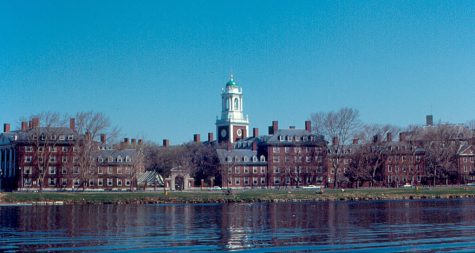Everybody Has A Price
The College Tuition Dilemma
Applying to college is a “struggle,” to say the least. Seniors, I’m sure there are many of you out there who can relate to my pain. Considering I’m in the thick of this process currently, this is an issue weighing on my mind. Forget the Common Application, the essays, the interviews. Forget the acceptances or rejections. Let’s talk about money – everyone’s favorite.
During the last 30 years, the cost required to obtain a college degree has risen 1,120%. Take a moment to let that number sink in. In May, the New York Reserve posted a report on household debt, and student loans took the prize with 1.1 trillion dollars. How about we take another moment with that number?
Now, student loans are inevitably the result of rising tuition costs, which, in turn, are the result of the emphasis across the nation being placed on the sacred title that is a college degree. However, let’s rewind from four years into the future to look at the present: I’m not even going to be given the opportunity to accumulate debt (as wonderful as that is) if I can’t even afford a college altogether.
My family does not live on the streets. My dad has a well-paying job. We can afford vacations and cars and common luxuries. But college is a different beast.
Every family fills out the FAFSA (Free Application for Federal Student Aid) when sending a child off to college – this is most commonly used by colleges to determine an EFC, or Expected Family Contribution, based primarily on income. Then, colleges delve out financial aid based on different, personal criteria to fill the gap between the EFC and tuition cost. Many public universities can’t spare to guarantee full aid to a family, but offer scholarships and loans. On the other hand, a lot of competitive, private colleges guarantee to meet all demonstrated need through grants, more loans, and work study opportunities, but refuse to give scholarships.
This sounds great. After all, on my application list I have both public and private schools, from state colleges to research institutes to liberal arts schools to Ivy Leagues. But wait. The Ivy’s offer tremendous money since they’re so well-endowed, but what are the chances of being admitted? The liberal arts schools meet all of the demonstrated need, but assume once my brothers graduate in two years, my family will suddenly be able to afford thousands of dollars more (heads up – it doesn’t work that way). Research institutes simply can’t offer enough in scholarships to put a dent in their tuition cost. Out-of-state public colleges have awful merit for anyone outside of their state borders.
Where does that leave me? Well, with in-state tuition, a couple thousand in loans and work study each year, and scholarships, some Colorado schools are looking up. Don’t get me wrong – I love Colorado – but I know I’m not the only one sensing an issue here.
With American economy stuck on a perpetual rollercoaster, the rationality about education flew off the deep end somewhere along the ride. The prices have hit a point where they actually dissuade students from pursuing a higher education. We’re even scaring students out of the US – Germany, viewing education as a right as well as essential in growth, has recently eliminated all college and university tuition. Not to mention, we’ve nearly deemed a college education useless because there’s a lack of employment to utilize our degrees. Where’s our focus on the pay-off?
Certainly I won’t be single-handedly transforming the economy any time soon, nor can I offer a clear-cut solution to this problem, but as we watch enrollment rates plummet, it needs to be taken into consideration how costs are influencing current college students as well as incoming ones. Listen up colleges, you’ve got thousands of qualified students being accepted and standing on your doorsteps, and yet the only thing turning them away is you.












Cody Maynard • Nov 15, 2014 at 1:29 pm
Great article Kenz, could not agree more. Perfect for an editorial piece. As far as the overall issue is concerned, well done. My congratulations to you, the editing staff, and the entire class on another great issue. Keep up the good work. You guys are doing a great job making sure that the stories are interesting for the Air Academy demographic. I look forward to reading your next issue!